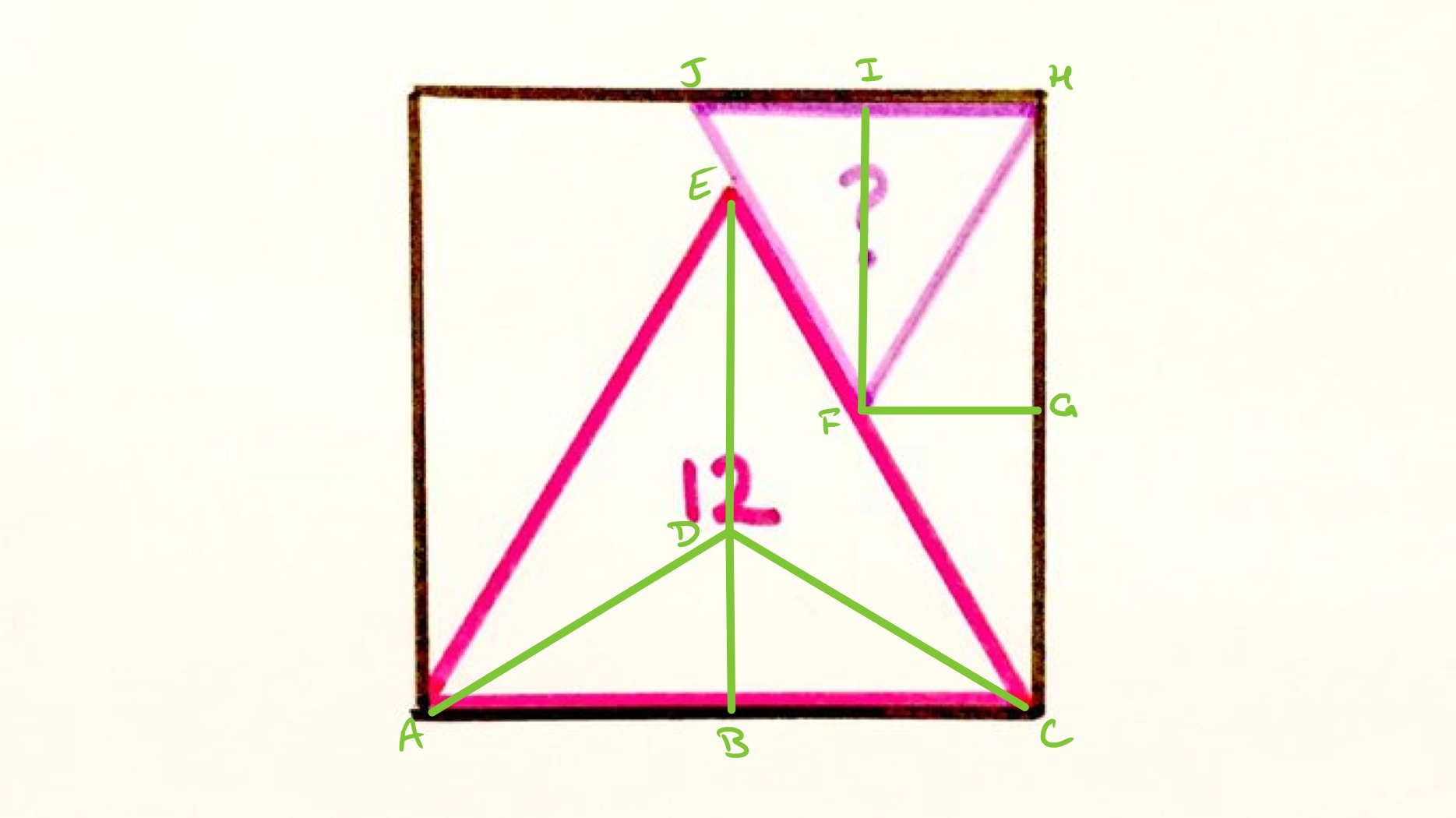Notes
equilateral triangles in a square solution
Equilateral Triangles in a Square

Two equilateral triangles in a square. What’s the missing area?
Solution by Lengths in an Equilateral Triangle

In the above diagram, is the circumcentre of the equilateral triangle, so , , and all have the same length. Angles and are both .
Angles and are both , then and have the same length as they are both sides of the square. So triangles and are congruent. This means that the length of is the same as that of , and so of .
Using the relationships between lengths in an equilateral triangle, is rds of , and is of . So the side length of the smaller triangle is of the side length of the larger. Its area is therefore rd of the area of the larger, and so is .